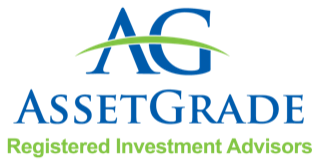
Rates, Inflation, Covid & Ukraine
By: Patrick R. Cote CFA, CFP®
What the heck is going on with interest rates? You might have noticed that after years of being extremely low, they started to creep up in 2022 but then just took a big drop back again over the last couple of weeks. What does it all mean, and how does it impact you?
To answer those questions, we need to jump back in time to the 1970s. Aside from bell bottoms, the 1970s were known for stagflation – high inflation and a stagnant economy. Once high inflation takes hold in an economy, it is very difficult to overcome. To get rid of inflation, Paul Volcker, the Fed chair at the time, took the courageous step of raising interest rates as much as was needed to break the back of inflation.
It may sound counterintuitive, however, to reduce inflation, interest rates need to be raised high enough that people will reduce their spending. Unfortunately, that happens as the economy slows down – businesses and people do not want to borrow because interest rates are too high, so eventually a recession comes around. Raising rates is exactly what Volcker did in the early 1980s – in fact, mortgages hit a high of 16.63% in 1981, reaching the point where no one wanted to buy a home back then! Volcker’s move ultimately led to the booming 80s, however, it took a lot of pain to get past the 1981 recession.
Since the 1980s, most central bankers have made avoiding inflation one of their top priorities – they would raise or lower interest rates with a goal of keeping inflation in check. This cycle fell apart after the 2008 housing downturn. Interest rates were lowered to near zero as the stock market fell 50% and the economy went into recession (the Fed funds rate, which is the key short-term rate set by the Federal reserve, had not been below 1% since 1958). However, as the market and the economy recovered, the Fed did not follow the typical path of raising the Fed funds rate. Instead, the Fed kept rates below 1% from 2008 until 2017.
This extended period of low interest rates created a new set of winners and losers. The biggest winners were borrowers, since they were able to borrow at unusually low rates (think of mortgages at 2% – 3%). Stocks also did well, since they provided an alternative to the low rates available with bonds. In particular, growth stocks had the best returns, since their distant future profits were worth more when discounted at lower rates. Unfortunately, the biggest losers from the low rate period were savers – bank accounts and money market accounts were all near zero and did not even cover the rate of inflation.
It looked like the Fed was finally on a path to raising interest rates to more “normal” levels by the end of 2019. However, as the Covid pandemic hit in 2020, the stock market fell 30% in a couple of months and much of the world went into lockdown. To address this issue, the Fed once again brought short-term rates back down to near zero. Because of the concerns about stock and bond market instability, the Fed also became much more active in driving down rates for intermediate and long-term bonds as well, even going so far as to support high-yield (junk) bonds.
At the same time as the Fed was responding with lower rates, the US government came out with the largest stimulus packages and associated deficits since World War 2. There was rare bipartisan support for this level of stimulus because of the pandemic concerns. However, this created massive demand, particularly for goods, since many people were stuck at home. This high demand created shortages, which in turn helped create inflation. After years of not being able to get inflation to the Fed target of 2%, inflation jumped up to 7% in 2021. At first, Jerome Powell, the Fed chair, said he expected inflation to be “transitory” because of the unusual circumstances with the pandemic. However, he recently acknowledged that it looks like higher inflation is here to stay.
With the economy roaring back, the stock market at record levels and inflation at a 40 year high, the Fed indicated they would start raising rates in 2022. In anticipation of the move, interest rates for medium and long-term bonds started going up over the last couple of months, on their way back up to “normal” levels. As one might expect, the rise in rates contributed to the decline in stocks so far in 2022.
The return to normalcy for the bond market came to a halt a couple of weeks ago with the crisis in Ukraine. Because of the potential for the conflict to grow beyond Ukraine and for energy and commodity markets to be impacted negatively, there was a return to safety with many investors wanting to go back to US Treasury bonds. This had the effect of once again bringing interest rates down.
So where do things go from here and how are you impacted? If the conflict in the Ukraine is resolved quickly, we could go right back to where we were earlier in 2022 – rising interest rates with a mixed impact on stocks around the world. However, if the conflict escalates further, we could see further reductions in interest rates, even higher commodity prices and more potential losses in the stock market. Of course, making major changes to your portfolio in anticipation of these moves is likely to hurt your investment returns even more than standing firm.
The better approach is to be ready to rebalance your portfolio if there are significant moves. For example, if the market falls 10%, you can sell some of your bond holdings (which will have gone back up in value as rates drop) to buy more stocks and get your portfolio back into balance. If it has been more than a year since you rebalanced your portfolio anyway, it is a good idea to make sure your portfolio is aligned with your goals and compare your actual asset allocation with your target asset allocation (e.g., 60/40 stocks/bonds).
The bottom line is that after a very long period of unusually low rates, it is important to be ready for higher rates to come back.

